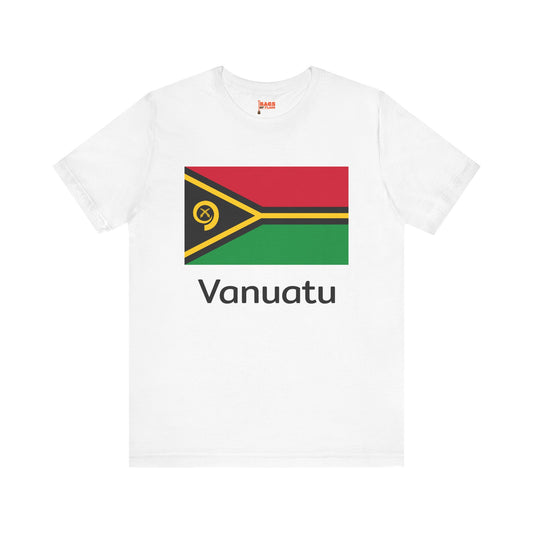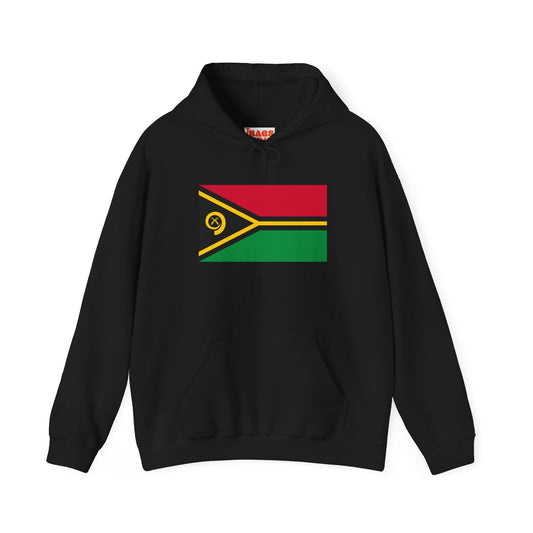-
Vanuatu Sweatshirt
Regular price $34.15 USDRegular priceUnit price / per -
Vanuatu Pillow
Regular price $22.65 USDRegular priceUnit price / per -
Vanuatu Flag Sweatshirt
Regular price $34.15 USDRegular priceUnit price / per -
Vanuatu Backpack
Regular price $59.79 USDRegular priceUnit price / per -
Vanuatu Leather Patch Hat
Regular price $18.85 USDRegular priceUnit price / per -
Vanuatu Mug
Regular price $11.65 USDRegular priceUnit price / per -
Vanuatu Trucker Cap
Regular price $14.90 USDRegular priceUnit price / per -
Vanuatu Hoodies
Regular price $34.40 USDRegular priceUnit price / per -
Vanuatu T-shirts
Regular price $22.79 USDRegular priceUnit price / per -
Vanuatu Flag Hoodies
Regular price $34.40 USDRegular priceUnit price / per -
Vanuatu Flag on T-shirt
Regular price $22.79 USDRegular priceUnit price / per
Collection: Vanuatu
The Vanuatu flag is a unique symbol representing the Pacific island nation's rich history and culture. We will explore the flag's design, history, and usage, delving into its symbolism and significance in the modern world.
Overview of the Vanuatu Flag's Design and Colors

The flag of Vanuatu showcases a dynamic interplay of colors and symbols, consisting of a field split horizontally into green at the top and red at the bottom, with a black triangle extending from the hoist side. A unique feature is the black fimbriation that outlines the green and red bands, creating a striking contrast. Centered within the black triangle is a yellow emblem that consists of a boar's tusk encircling two crossed namele fern leaves. These elements are not just mere decorations but are deeply ingrained in the nation’s ethos.
The flag's color palette—green, red, black, and yellow—holds profound significance, embodying the nation’s verdant landscapes, its historical struggles, the Melanesian majority, and a symbol of light and harmony, respectively. This amalgamation of colors and symbols on the flag vividly narrates the story of Vanuatu's natural beauty, its tumultuous past, and the unity and aspiration of its people.
Historical Context: Adoption and Evolution

The journey to adopting the Vanuatu flag began as the nation approached its independence from the condominium government of France and the United Kingdom. This unique colonial arrangement lasted until the late 20th century. Amidst the fervor for self-determination, a national competition was organized to design a flag that would encapsulate the essence of the newly forming nation. The winning design, created by Kalontas Malon, a local artist, was officially adopted on February 13, 1980, marking a significant milestone in the country's path to sovereignty.
This flag was more than just a new symbol for the country; it declared Vanuatu's identity, values, and aspirations as an independent state. It replaced the flags of the colonial powers and served as a unifying emblem for the diverse communities within Vanuatu. Since its adoption, the flag has remained unchanged, standing as a testament to the enduring spirit and unity of the Vanuatu people.
The flag’s elements were carefully selected, with each symbol and color chosen for its cultural and historical significance. This careful consideration ensured that the flag would represent the nation's present and future and honor its past. As such, the flag of Vanuatu is not just a piece of cloth but a living narrative of the nation's journey from colonization to independence, embodying the pride, resilience, and unity of its people.
Symbolism: The Story Behind the Flag
The symbolism embedded in the Vanuatu flag is rich and multifaceted, designed to convey the essence and values of the nation. The central emblem of the boar's tusk is a prestigious symbol in Vanuatu’s culture, denoting prosperity, power, and achievement. Traditionally, a boar's tusk that circles back to touch its own tip represents a high social standing and is often worn by leaders during important ceremonies. The inclusion of this emblem on the flag underscores the importance of traditional leadership and social harmony within the country.
Surrounding the boar's tusk, the two crossed namele fern leaves symbolize peace and the unity of the nation's people. In Vanuatu culture, the namele leaf is considered sacred and is used during significant community events to denote peace and respect. This imagery on the flag emphasizes the country's commitment to these values, bridging diverse cultural groups across the islands.
The backdrop colors of the flag further enrich its symbolism. Green signifies the lush landscapes and agricultural abundance of the islands, a source of sustenance and life. Red is a tribute to the blood shed in the struggle for freedom, reflecting the nation’s history of resilience and independence. Black represents the Melanesian people, the core of Vanuatu's identity, while the yellow color of the emblem portrays the bright future and optimism of the nation. Together, these symbols and colors weave a narrative of unity, respect for tradition, and hope for the future, encapsulating the spirit of Vanuatu.
Current Relevance of the Vanuatu Flag
In modern-day Vanuatu, the national flag is a prominent fixture at a wide array of events, symbolizing the country’s unity and identity. From significant government ceremonies and national holidays to sports competitions, the flag is a visible representation of the nation’s pride and heritage. Its use extends beyond mere decoration, serving as a rallying point for the people of Vanuatu during both celebratory occasions and moments of national importance. Within the military context, the flag embodies the spirit and values of the nation, carried and displayed with great respect by the country’s armed forces. While the flag is cherished by many, it has also been the subject of discussions and debates reflecting the evolving perspectives within Vanuatu's society. These conversations highlight the dynamic relationship between the nation’s people and their flag, illustrating its ongoing significance in the cultural and political landscape of Vanuatu.
Additional Facts: Protocols and Anecdotes
Respecting the Vanuatu flag involves adhering to several guidelines, underscoring the flag's importance to the nation's identity and heritage. It is paramount that the flag is always displayed in pristine condition, symbolizing the country's dignity and pride. One of the cardinal rules is that the flag must not come into contact with the ground, reflecting its sacred status. Additionally, it is flown at half-mast exclusively during periods of national grief, to honor the memory of those lost. Another interesting protocol is the flag’s precedence when displayed alongside other flags; it should always be positioned in a place of honor, illustrating the respect and sovereignty of the nation. Beyond the formalities, the Vanuatu flag stands out globally due to its distinct absence of blue, a common color in many national flags, which adds to its uniqueness. This aspect, along with its vibrant colors and symbolic imagery, makes the flag a fascinating topic of discussion for flag enthusiasts and cultural scholars alike.






















